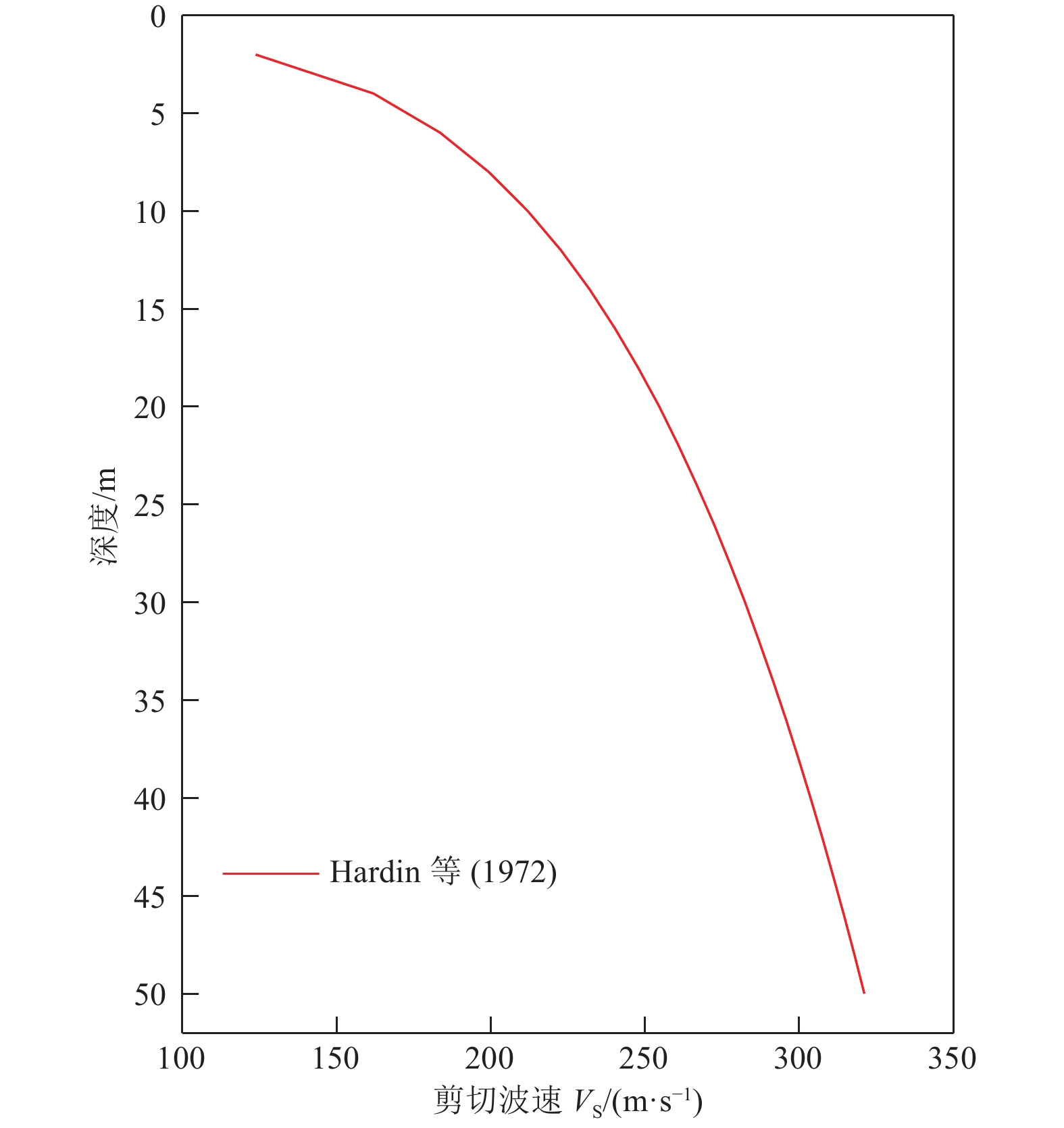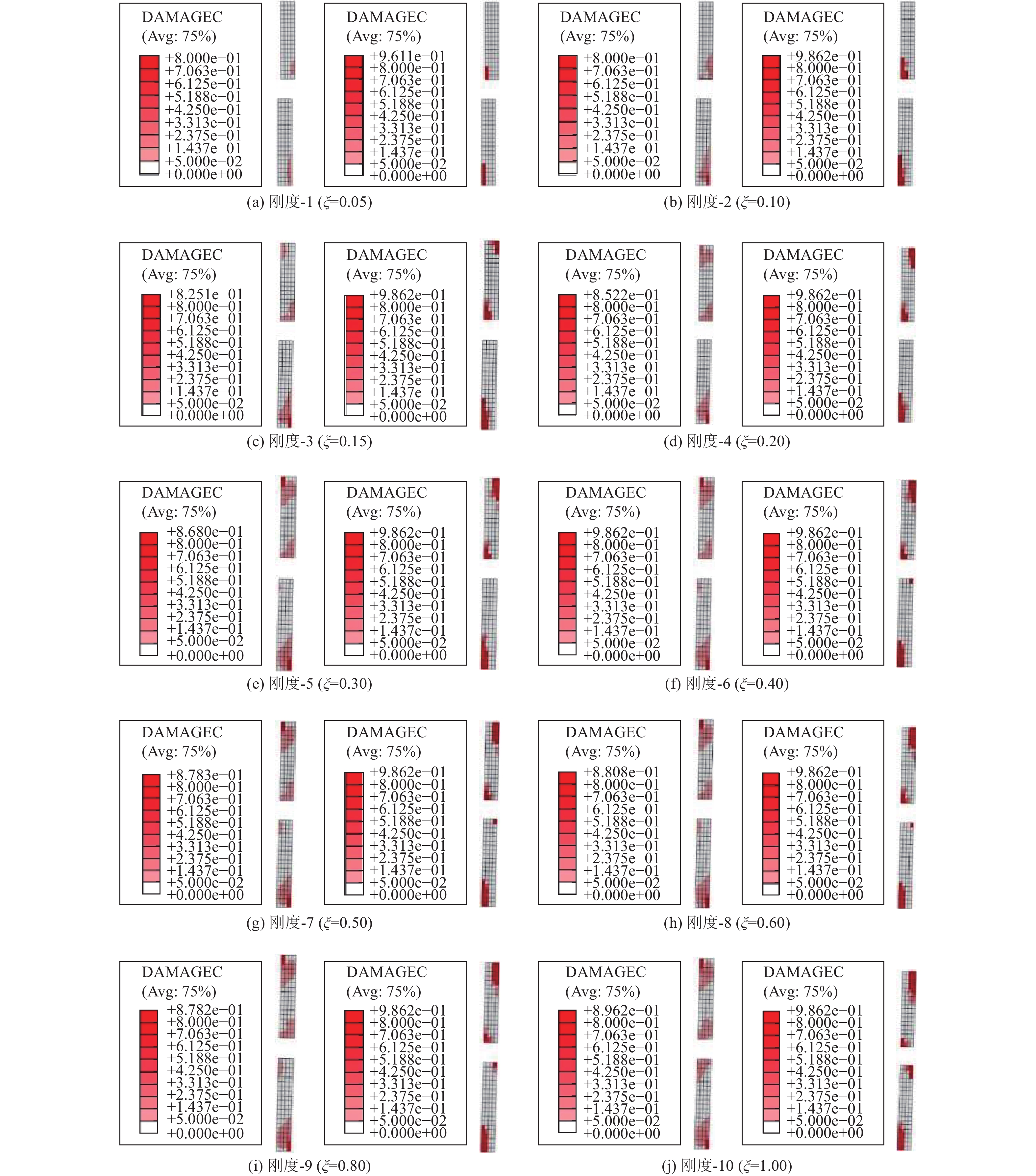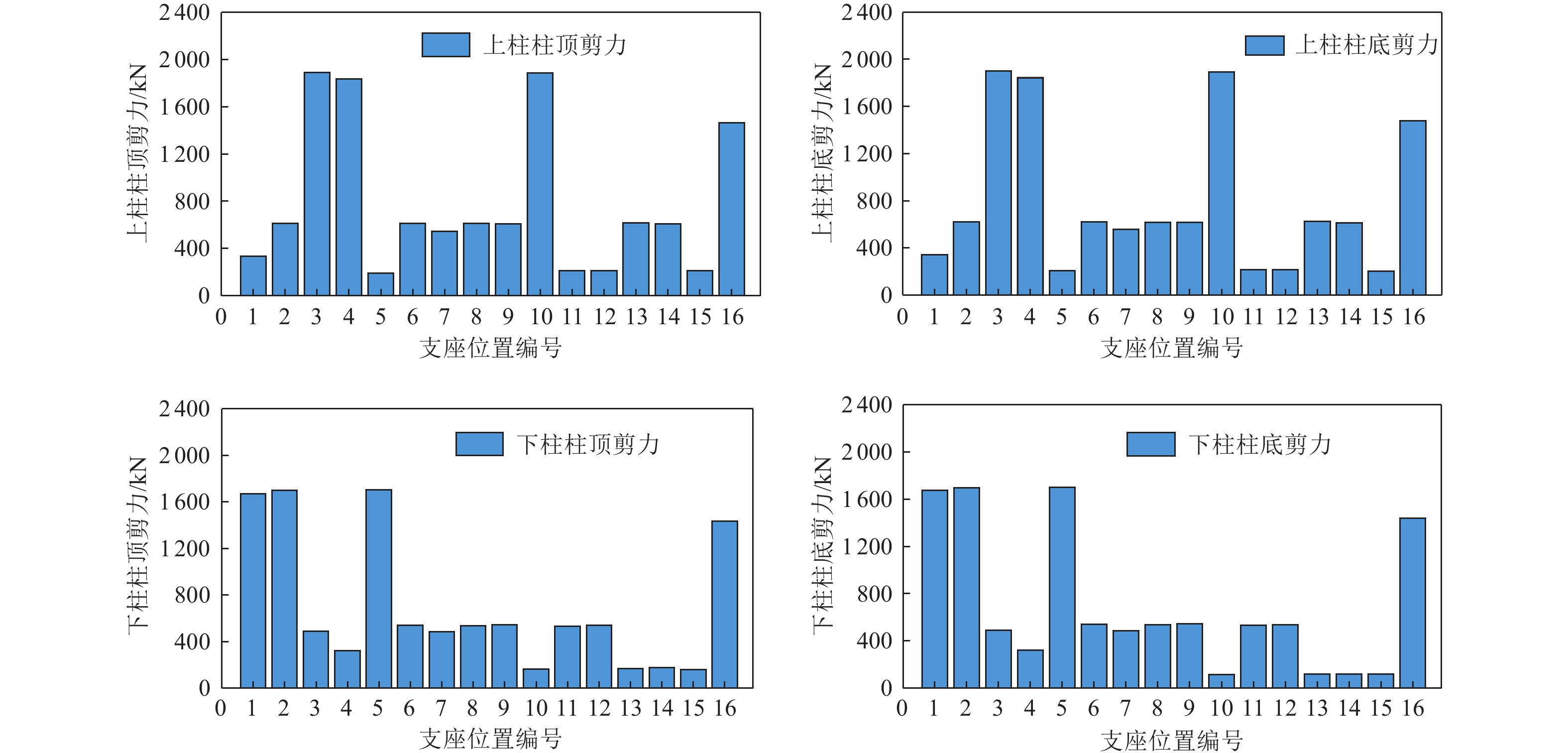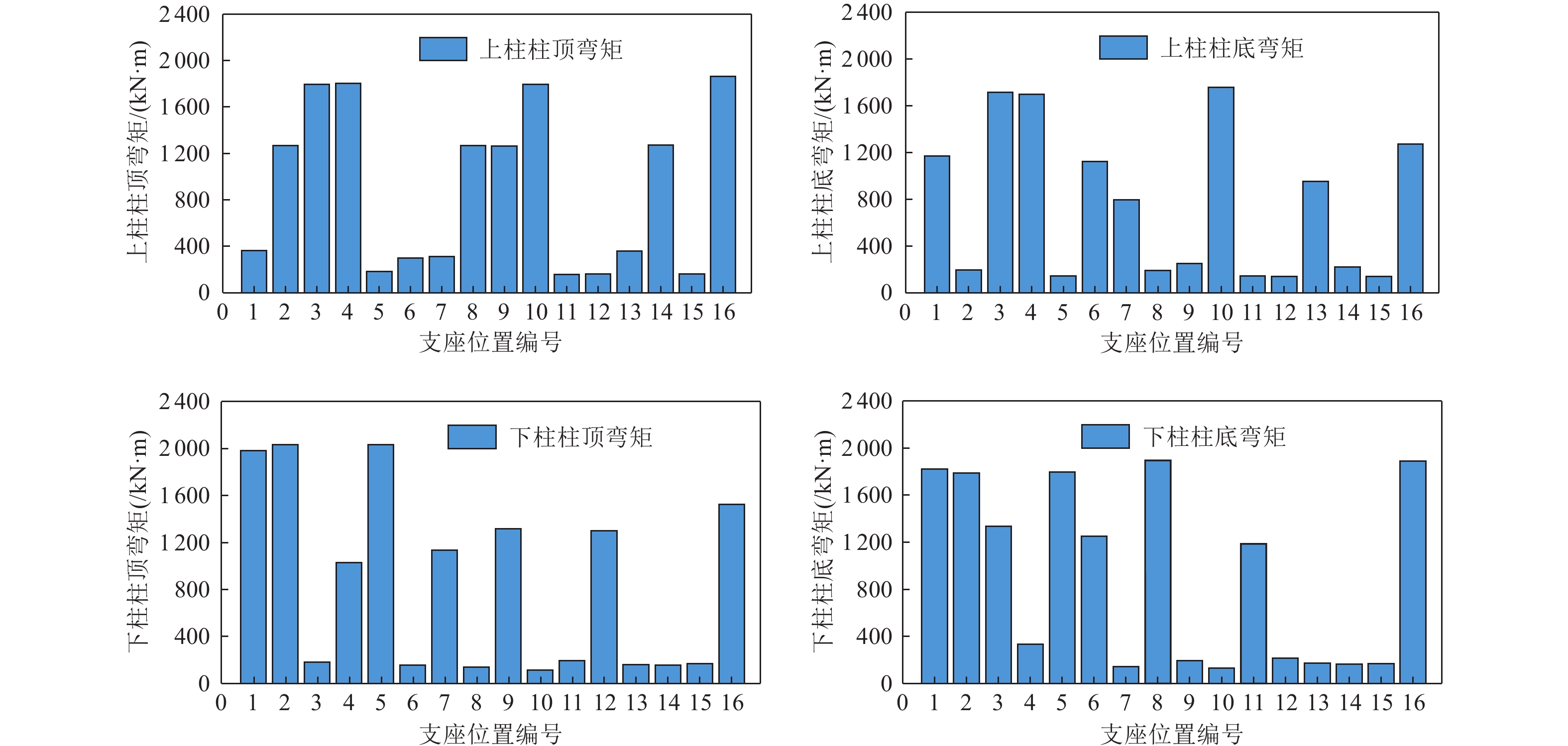Optimal Stiffness and Location of Rubber Damping Bearing Applied to Two Story and Two Span Subway Station Structure
-
摘要: 本文以某两层两跨地铁车站结构为研究对象,采用地下结构Pushover分析方法分别对橡胶支座不同刚度和不同布设位置条件下地铁车站结构的地震破坏反应特点进行对比分析,进一步揭示了地铁车站结构布设橡胶隔震支座的最优刚度和最优布设位置。研究结果表明:(1)柱子一端布设橡胶支座后,对于柱子顶、底端剪力均有明显的减震效果,而对于弯矩仅在布设支座端表现出良好的减震效果;(2)对于地铁车站结构,柱子端部布设橡胶支座时其刚度比的优选范围为0.1左右;(3)仅在两层两跨车站结构某一层布设支座,当支座位于中板侧时,未布设支座层的中柱会出现损伤增大的现象;(4)在结构每层中柱均布设一个支座时,结构上柱顶部和下柱底部同时布设支座时柱子的损伤略低于其他位置工况;(5)两层两跨车站结构布设三个支座时,总体来讲此时所有中柱均取得良好的减震效果,尤其对于中柱顶、底端完全布设的柱子,其减震效果更为明显。Abstract: In this paper, an actual two-story, two-span subway station structure is used as the research object, and the Pushover analysis method for underground structures is employed to compare and analyze the seismic damage response characteristics of subway station structures under different stiffness and locations of rubber bearings. This work aims to determine the optimal stiffness and placement of rubber damping bearings in subway station structures. The research findings are as follows: (1) When the rubber bearing is installed at one end of the column, there is a significant damping effect on the shear at the top and bottom of the column, while the bending moment shows a good damping effect only at the end of the bearing. (2) For the subway station structure, the optimal stiffness ratio of rubber bearings placed at the ends of columns is approximately 0.1. (3) In a two-story, two-span station structure, when the bearing is located on the side of the middle plate, the damage to the middle column without the bearing layer increases. (4) When a bearing is installed on the middle column of each layer of the structure, the damage to the column is slightly lower compared to other configurations when the bearing is placed at the top of the upper column and the bottom of the lower column simultaneously. (5) When three bearings are arranged in the two-story, two-span station structure, all the central columns exhibit a good overall damping effect. The damping effect is more pronounced when the bearings are placed completely at the top and bottom of the central column.
-
表 1 数值模拟工况支座刚度比设置
Table 1. Numerical simulation cases-Bearing stiffness ratio
工况编号 刚度比 工况编号 刚度比 刚度-1 0.05 刚度-6 0.4 刚度-2 0.1 刚度-7 0.5 刚度-3 0.15 刚度-8 0.6 刚度-4 0.2 刚度-9 0.8 刚度-5 0.3 刚度-10 1.0-无支座 表 2 数值模拟工况橡胶支座布设位置
Table 2. Numerical simulation cases-Layout positions of rubber bearings
工况编号 布设位置 工况编号 布设位置 工况编号 布设位置 刚度-1 1 刚度-7 1、4 刚度-13 1、3、4 刚度-2 2 刚度-8 2、3 刚度-14 2、3、4 刚度-3 3 刚度-9 2、4 刚度-15 1、2、3、4 刚度-4 4 刚度-10 3、4 刚度-16 无支座 刚度-5 1、2 刚度-11 1、2、3 — — 刚度-6 1、3 刚度-12 1、2、4 — — -
丁洁民,涂雨,吴宏磊等,2019. 减隔震组合技术在高烈度抗震设防区的应用研究. 建筑结构学报,40(2):77−87.Ding J. M., Tu Y., Wu H. L., et al., 2019. Application research of seismic isolation system combined with energy-dissipation technology in high seismic intensity region. Journal of Building Structures, 40(2): 77−87. (in Chinese) 杜修力,王刚,路德春,2016. 日本阪神地震中大开地铁车站地震破坏机理分析. 防灾减灾工程学报,36(2):165−171.Du X. L., Wang G., Lu D. C., 2016. Earthquake damage mechanism analysis of Dakai metro station by Kobe earthquake. Journal of Disaster Prevention and Mitigation Engineering, 36(2): 165−171. (in Chinese) 杜修力,刘迪,许成顺等,2021. 橡胶支座在浅埋地下框架结构中的减震效果研究. 岩土工程学报,43(10):1761−1770. doi: 10.11779/CJGE202110001Du X. L., Liu D., Xu C. S., et al., 2021. Seismic mitigation effect of shallow-covered underground frame station with rubber bearings. Chinese Journal of Geotechnical Engineering, 43(10): 1761−1770. (in Chinese) doi: 10.11779/CJGE202110001 韩淼,张文会,朱爱东等,2016. 不同层隔震结构在近断层地震作用下动力响应分析. 振动与冲击,35(5):120−124.Han M., Zhang W. H., Zhu A. D., et al., 2016. Dynamic response analysis for multi-story structures with different isolation stories under near-fault ground motions. Journal of Vibration and Shock, 35(5): 120−124. (in Chinese) 刘文光,周福霖,庄学真等,1999. 柱端隔震夹层橡胶垫力学性能试验研究. 地震工程与工程振动,19(3):121−126. doi: 10.3969/j.issn.1000-1301.1999.03.022Liu W. G., Zhou F. L., Zhuang X. Z., et al., 1999. Mechanic characteristics of rubber bearings in column top isolation system. Earthquake Engineering and Engineering Vibration, 19(3): 121−126. (in Chinese) doi: 10.3969/j.issn.1000-1301.1999.03.022 孟益平,李荣鑫,边家靓,2018. 地震作用下铅芯橡胶隔震支座在地铁车站中的应用. 安徽建筑大学学报,26(1):11−15. doi: 10.11921/j.issn.2095-8382.20180103Meng Y. P., Li R. X., Bian J. L., 2018. Application of lead-core rubber isolation bearing in subway station under earthquake. Journal of Anhui Jianzhu University, 26(1): 11−15. (in Chinese) doi: 10.11921/j.issn.2095-8382.20180103 牟翠翠,张立明,2016. 工程抗震中的隔震技术研究综述. 建材技术与应用,(3):12−14. doi: 10.3969/j.issn.1009-9441.2016.03.004Mou C. C., Zhang L. M., 2016. Research summary on seismic isolation technology in earthquake resistant engineering. Research & Application of Building Materials, (3): 12−14. (in Chinese) doi: 10.3969/j.issn.1009-9441.2016.03.004 日本建筑学会,2006. 隔震结构设计. 刘文光,译. 北京:地震出版社.Architectural Institute of Japan,2006. Recommendation for the design of base isolated buildings. Liu W. G. ,trans. Beijing:Seismological Press. (in Chinese) 陶连金,李卓遥,安军海等,2018. 地铁车站工程应用叠层橡胶支座隔震效果的研究. 公路,63(7):328−333.Tao L. J., Li Z. Y., An J. H., et al., 2018. Study of isolation effect for laminated rubber bearing applied in the metro station engineering. Highway, 63(7): 328−333. (in Chinese) 庄海洋,陈国兴,梁艳仙等,2007. 土体动非线性黏弹性模型及其ABAQUS软件的实现. 岩土力学,28(3):436−442. doi: 10.3969/j.issn.1000-7598.2007.03.002Zhuang H. Y., Chen G. X., Liang Y. X., et al., 2007. A developed dynamic viscoelastic constitutive relations of soil and implemented by ABAQUS software. Rock and Soil Mechanics, 28(3): 436−442. (in Chinese) doi: 10.3969/j.issn.1000-7598.2007.03.002 An X. H., Shawky A. A., Maekawa K., 1997. The collapse mechanism of a subway station during the Great Hanshin Earthquake. Cement and Concrete Composites, 19(3): 241−257. doi: 10.1016/S0958-9465(97)00014-0 Chen Z. Y., Chen W., Bian G. Q., 2014. Seismic performance upgrading for underground structures by introducing shear panel dampers. Advances in Structural Engineering, 17(9): 1343−1357. doi: 10.1260/1369-4332.17.9.1343 Du X. L., Jiang J. W., El Naggar M. H., et al., 2021. Interstory drift ratio associated with performance objectives for shallow-buried multistory and span subway stations in inhomogeneous soil profiles. Earthquake Engineering & Structural Dynamics, 50(2): 655−672. Hardin B. O., Drnevich V. P., 1972. Shear modulus and damping in soils: Design equations and curves. Journal of the Soil Mechanics and Foundations Division, 98(7): 667−692. doi: 10.1061/JSFEAQ.0001760 Huo H., Bobet A., Fernández G., et al., 2005. Load transfer mechanisms between underground structure and surrounding ground: Evaluation of the failure of the Daikai station. Journal of Geotechnical and Geoenvironmental Engineering, 131(12): 1522−1533. doi: 10.1061/(ASCE)1090-0241(2005)131:12(1522) Iida H., Hiroto T., Yoshida N., et al., 1996. Damage to Daikai subway station. Soils and Foundations, 36(1): 283−300. Jiang J. W., Xu C. S., El Naggar H. M., et al., 2021. Improved Pushover method for seismic analysis of shallow buried underground rectangular frame structure. Soil Dynamics and Earthquake Engineering, 140: 106363. doi: 10.1016/j.soildyn.2020.106363 Liu D., Xu C. S., Du X. L., et al., 2022. Seismic performance and fragility analysis of underground subway station with rubber bearings. Soil Dynamics and Earthquake Engineering, 162: 107511. doi: 10.1016/j.soildyn.2022.107511 Liu Z. Q., Chen Z. Y., Liang S. B., et al., 2020. Isolation mechanism of a subway station structure with flexible devices at column ends obtained in shaking-table tests. Tunnelling and Underground Space Technology, 98: 103328. doi: 10.1016/j.tust.2020.103328 Ma C., Lu D. C., Du X. L., 2018. Seismic performance upgrading for underground structures by introducing sliding isolation bearings. Tunnelling and Underground Space Technology, 74: 1−9. doi: 10.1016/j.tust.2018.01.007 Ma C., Lu D. C., Du X. L., et al., 2019. Structural components functionalities and failure mechanism of rectangular underground structures during earthquakes. Soil Dynamics and Earthquake Engineering, 119: 265−280. doi: 10.1016/j.soildyn.2019.01.017 Nishioka T. , Unjoh S. , 2003. A simplified evaluation method for the seismic performance of underground common utility boxes. In: Proceedings of the 2003 Pacific Conference on Earthquake Engineering. Christchurch, New Zealand. Turkington D. H., Carr A. J., Cooke N., et al., 1989. Seismic design of bridges on lead-rubber bearings. Journal of Structural Engineering, 115(12): 3000−3016. doi: 10.1061/(ASCE)0733-9445(1989)115:12(3000) Wood J. H., 2007. Earthquake design of rectangular underground structures. Bulletin of the New Zealand Society for Earthquake Engineering, 40(1): 1−6. doi: 10.5459/bnzsee.40.1.1-6 Xu C. S., Zhang Z. H., Li Y., et al., 2020. Validation of a numerical model based on dynamic centrifuge tests and studies on the earthquake damage mechanism of underground frame structures. Tunnelling and Underground Space Technology, 104: 103538. doi: 10.1016/j.tust.2020.103538 Xu C. S., Zhang Z. H., Li Y., et al., 2021. Seismic response and failure mechanism of underground frame structures based on dynamic centrifuge tests. Earthquake Engineering & Structural Dynamics, 50(7): 2031−2048. Xu Z. G. , Du X. L. , Xu C. S. , et al. , 2019. Seismic mitigation mechanism of FPB applied in underground structure. In: The 2019 International Conference on Civil Engineering, Mechanics and Materials Science. Changsha. Zhang Z. H., Li Y., Xu C. S., et al., 2021. Study on seismic failure mechanism of shallow buried underground frame structures based on dynamic centrifuge tests. Soil Dynamics and Earthquake Engineering, 150: 106938. doi: 10.1016/j.soildyn.2021.106938 -



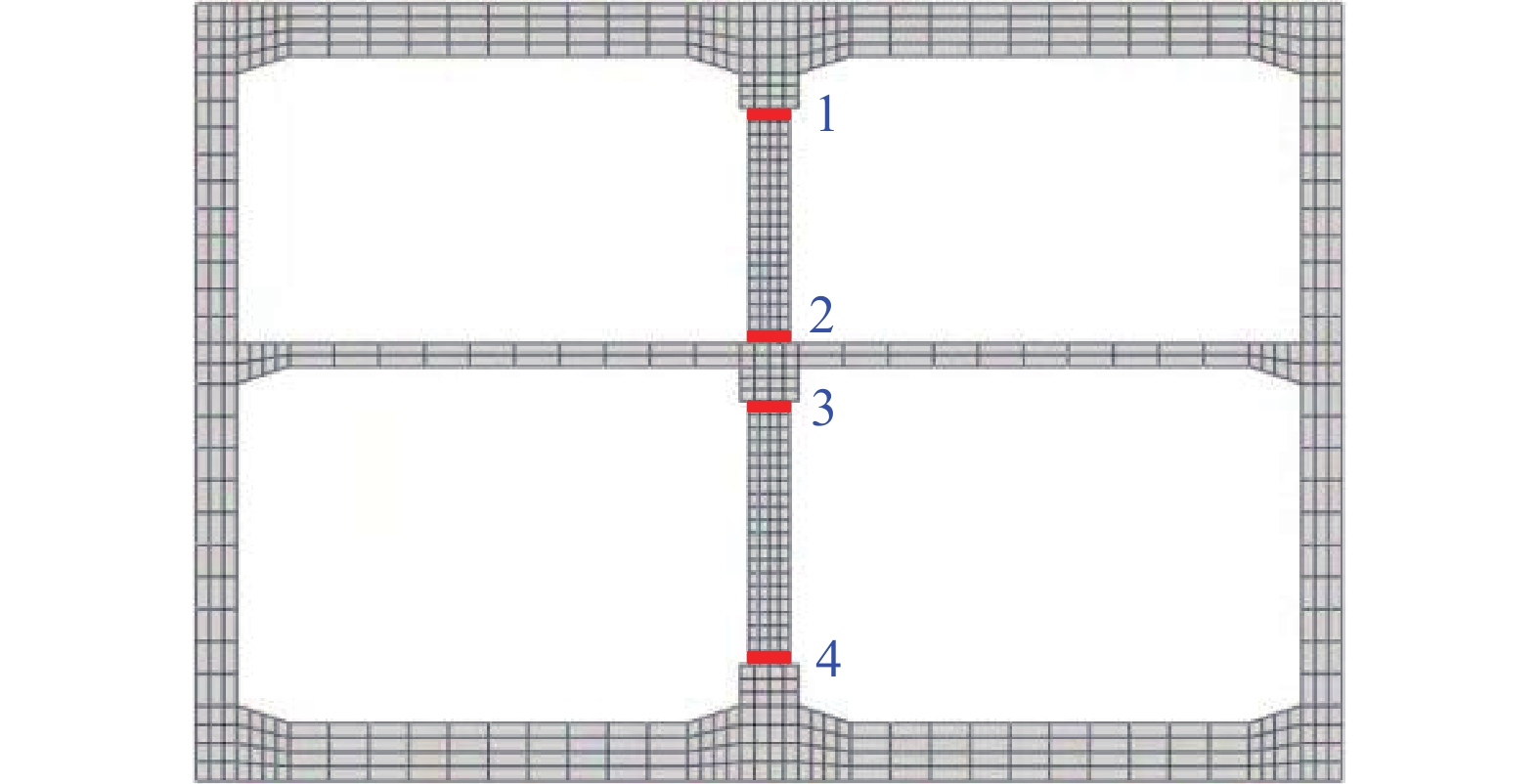
 下载:
下载:

